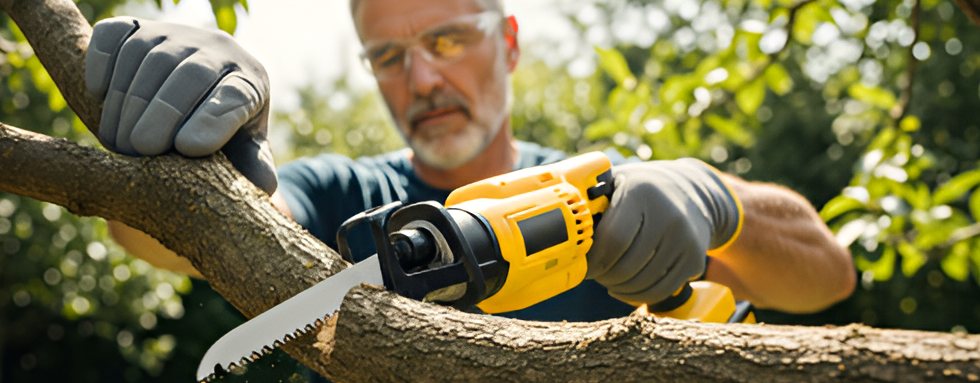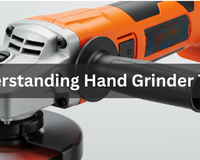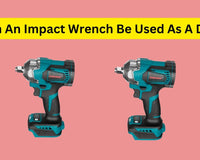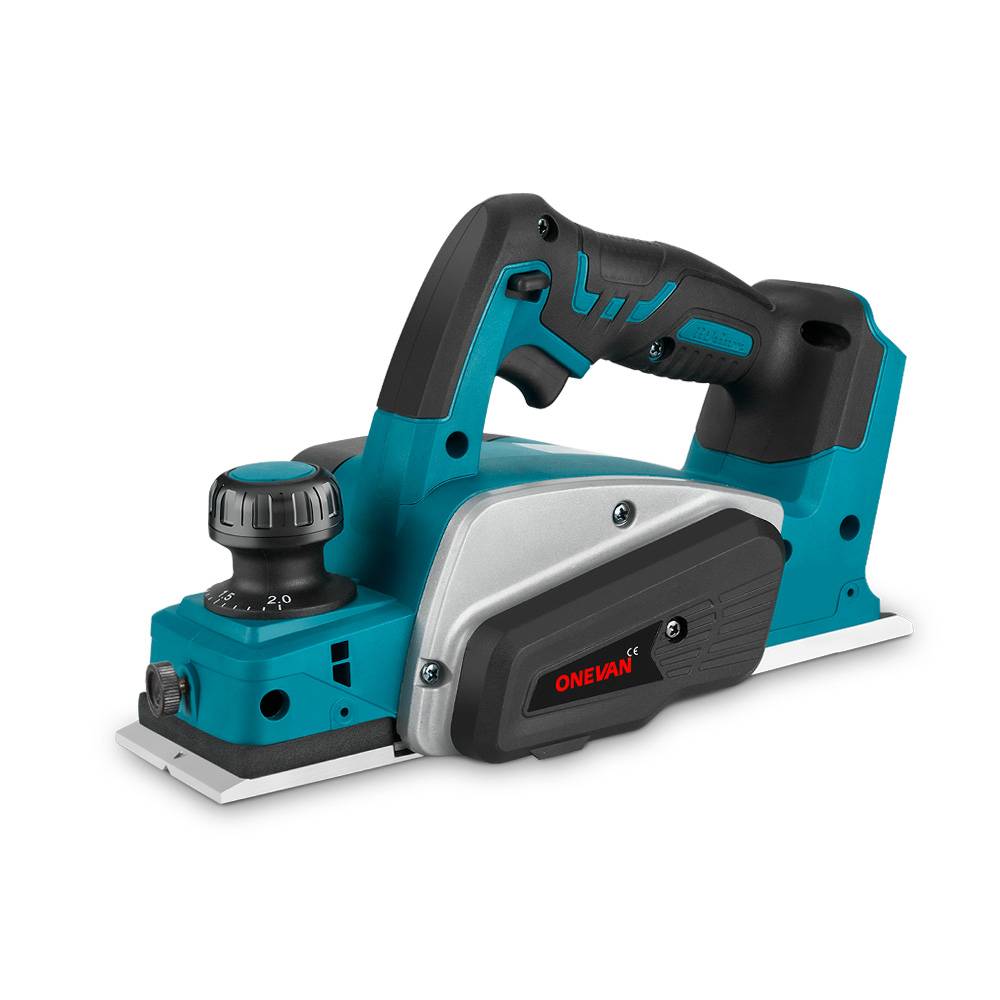Se tem um cano para cortar, uma parede para abrir e um jardim para cuidar, mas com tempo e energia limitados, uma serra sabre é uma das ferramentas mais versáteis que pode ter. Esta ferramenta única dá conta de tudo. Concebida para controlo em espaços apertados e difíceis, a serra sabre é a favorita tanto entre os profissionais da construção civil como entre os entusiastas de bricolage .
Caso se esteja a perguntar para que serve uma serra sabre e como utilizá-la em segurança, este guia aborda tudo. Seja para renovar uma casa de banho ou para facilitar o trabalho no jardim, vamos mostrar-lhe exatamente onde se encaixa uma serra sabre e porque é uma ferramenta que vai querer usar sempre.
1. O que é uma serra alternativa e porque preciso de uma?
Uma serra reciprocante é uma ferramenta de corte resistente. Utiliza um movimento de empurrar e puxar para cortar diversos materiais. É também conhecida como serra reciprocante ou serra reciprocante. Pode utilizar uma serra reciprocante para cortar madeira, metal, PVC, gesso cartonado e até ramos de árvores. Com a lâmina certa, pode lidar com praticamente qualquer tarefa de corte que enfrente em casa ou no trabalho.
Ora, para que serve uma serra sabre? Está concebida para trabalhar em espaços apertados e cantos difíceis, onde outras serras têm dificuldade. Se precisa de algo rápido, potente e fácil de usar, a sua serra sabre não o vai desiludir.
2. Diferentes materiais que podem ser cortados com uma serra alternativa
Uma serra sabre pode cortar diversos tipos de materiais. Só precisa de escolher a lâmina certa para o trabalho. Abaixo, descobrirá para que serve uma serra sabre e que tipos de materiais pode trabalhar.
Madeira
A madeira é um material que as pessoas costumam cortar com uma serra sabre. Seja para construir, reparar ou cortar objetos no exterior, esta serra funciona de forma rápida e fácil com a lâmina certa:
- Pode utilizar uma serra alternativa para cortar madeira macia, como pinho ou abeto, ao construir prateleiras ou estruturar paredes.
- Uma serra alternativa pode cortar madeira dura, como carvalho ou bordo, ao remover pavimentos ou reparar móveis.
- Uma lâmina de poda ajuda-o a aparar ramos grossos de árvores e a limpar o seu quintal.
- Pode usá-lo para derrubar cercas velhas, decks ou caixas de madeira durante a demolição.
- As serras alternativas podem cortar tábuas de madeira com pregos embutidos utilizando uma lâmina especializada concebida para cortar metal.
Metal
Com uma lâmina de metal, uma serra alternativa pode ser ideal para cortar tubos, parafusos e outras peças de metal:
- Uma serra alternativa pode cortar chapas finas de metal utilizadas em telhados ou condutas.
- Pode utilizá-lo para cortar tubos de metal feitos de cobre, aço ou alumínio durante as reparações.
- Utilizando uma lâmina resistente, uma serra alternativa pode cortar varões ao trabalhar com betão.
- As serras alternativas são boas para aparar vigas metálicas durante as renovações.
- Os parafusos, porcas ou suportes velhos podem ser cortados rapidamente com uma lâmina de corte de metal.
PVC e Plástico
Se trabalha com canalização ou qualquer outro serviço que envolva plástico, uma serra sabre é uma ferramenta útil. Faz cortes limpos e rápidos quando combinada com uma lâmina de dentes finos.
- Uma serra alternativa pode cortar tubos de PVC utilizados em canalizações residenciais e sistemas de irrigação.
- Pode usá-lo para aparar folhas de acrílico ou placas de plástico para projetos de artesanato.
- É útil para cortar tubos de plástico mais grossos, como o ABS ou o polipropileno.
- As serras alternativas podem partir grandes recipientes de plástico ou contentores de lixo.
- Também funcionam bem para aparar painéis plásticos ondulados utilizados em telhados ou placas.
Gesso cartonado
Muitas pessoas utilizam serras sabre quando trabalham com gesso cartonado na construção civil. Estas serras são rápidas, fáceis de controlar e conseguem alcançar atrás das paredes quando necessário.
- Pode cortar furos para interruptores de luz, tomadas ou canalizações novas.
- Uma serra alternativa é utilizada para remover placas de gesso partidas durante reparações domésticas.
- Ajuda a remover placas de drywall antigas ao renovar um quarto.
- A serra permite abrir paredes para instalar fios ou isolamento.
- A utilização da lâmina apropriada pode ajudar a minimizar o risco de atingir fios ou canos atrás da parede de gesso.
Alvenaria (com a lâmina certa)
A alvenaria é um material duro, como o tijolo ou o betão. Uma lâmina comum não é adequada para alvenaria; no entanto, a utilização de uma lâmina de carboneto ou diamante permite que uma serra alternativa corte materiais de alvenaria de forma eficaz, independentemente do tamanho do trabalho, desde que o operador seja hábil na utilização.
- As serras alternativas podem cortar tijolos durante pequenos projetos de reparação.
- Podem moldar blocos de betão para caber em espaços apertados.
- A serra pode aparar pedaços de azulejo quando trabalha em casas de banho ou cozinhas.
- Pode remover estuque ou placas de cimento das paredes exteriores.
- A argamassa entre tijolos ou pedras pode ser removida através de uma lâmina especial.
Compósitos e Laminados
Os compósitos e laminados são materiais sintéticos que se encontram em pavimentos, bancadas e decks exteriores. As serras sabre podem cortá-los perfeitamente se utilizar uma lâmina de dentes finos:
- Pode cortar o pavimento laminado no tamanho certo ao instalá-lo.
- O revestimento de fibrocimento pode ser cortado para se ajustar às paredes exteriores da sua casa.
- Uma serra alternativa ajuda-o a cortar contraplacado com acabamento liso para móveis.
- As bancadas sólidas podem ser remodeladas para cozinhas ou casas de banho.
- As tábuas de deck em compósito podem ser removidas ou redimensionadas durante as reparações.
Vidro (com precaução)
Embora as serras alternativas não sejam normalmente concebidas para cortar vidro, podem ser utilizadas com lâminas especializadas; no entanto, isto só deve ser feito com extremo cuidado, uma vez que o corte de vidro apresenta riscos de segurança significativos, incluindo o potencial de quebra.
- Uma serra alternativa pode ser utilizada para remover vidros de janelas antigas durante a demolição.
- Os painéis de vidro laminado podem ser cortados cuidadosamente com uma lâmina de diamante.
- O vidro aramado pode ser removido de portas ou paredes com um corte lento e constante.
- Os espelhos partidos podem ser aparados e descartados com segurança.
- O vidro do armário ou os painéis divisórios podem ser removidos durante a renovação.
3. Usos comuns de uma serra alternativa
Uma serra sabre é uma ferramenta versátil que pode ser utilizada em diversas situações. Seja a trabalhar em ambientes interiores ou exteriores, ajuda a cortar rapidamente, mesmo em espaços apertados. Pode usá-la para remodelações, jardinagem, marcenaria, canalização e muito mais. Abaixo estão algumas das formas mais comuns de utilizar uma serra sabre na vida real.
Projetos de Demolição
Quando se trata de demolir coisas, precisa de uma ferramenta que não se agarre. Uma serra sabre pode cortar paredes, tubagens e acessórios em apenas alguns segundos. É leve, fácil de segurar e encaixa bem em locais apertados. É por isso que é uma das preferidas para trabalhos de demolição.
Reformas residenciais
Ao renovar a sua casa, precisa primeiro de demolir as estruturas existentes. Uma serra sabre ajuda-o a fazê-lo com o mínimo de esforço. É ideal para trabalhos mais complicados que exijam um manuseamento cuidadoso. É ótima para:
- Corte de gesso cartonado para novas portas ou janelas
- Desmontar armários ou toucadores com segurança
- Alcançar e cortar canos ou suportes antigos
- Remover pisos ou tetos danificados
- Cortar vigas de madeira para alterar o formato do ambiente
Demolição Industrial
Em edifícios e espaços de trabalho maiores, as serras alternativas podem ajudar a cortar materiais específicos. Elas podem:
- Corte grandes tubos de aço e suportes em sistemas industriais
- Remova as condutas de ar antigas ou os painéis de teto durante a renovação
- Partir batentes de portas de metal ou vigas grossas de madeira
- Remover divisórias e grades de segurança nas fábricas
- Cortar suportes de equipamento ou peças danificadas em cantos apertados
Poda e Trabalho de Jardim
Se trabalha ao ar livre, uma serra alternativa pode ser uma alternativa útil ao serrote ou motosserra para muitas tarefas, especialmente para ramos mais pequenos. Ela é mais segura, mais pequena e mais fácil de controlar.
Poda de árvores
Uma serra alternativa é boa para cortar ramos de árvores demasiado grossos para tesouras, mas demasiado pequenos para uma motosserra:
- Utilize uma lâmina de poda com dentes largos para cortar a madeira mais rapidamente
- Apare os ramos mortos ou partidos perto do tronco
- Alcance pontos estreitos entre ramos ou cercas
- Corte os ramos caídos em pedaços mais pequenos para descarte
- Utilize uma serra alternativa sem fios para se mover livremente sem um cabo de alimentação
Manutenção de jardins
Além das árvores, também pode utilizar uma serra alternativa para limpar arbustos, arbustos e outras plantas:
- Corte os arbustos grossos e crescidos que estejam a bloquear os passeios.
- Apare os arbustos para lhes dar forma sem arrancar as raízes.
- Corte bambu ou erva alta que tenha crescido muito.
- Remova as raízes das plantas presas em bordaduras de madeira ou pedra.
- Reduza ao mínimo as ferramentas de jardinagem utilizando uma única serra para muitas tarefas.
Marcenaria
A marcenaria é outra área em que uma serra alternativa pode ser benéfica, especialmente quando a velocidade e o alcance são mais importantes do que a obtenção de arestas suaves.
Enquadramento
A estruturação é o processo de construção da estrutura de uma parede ou estrutura. Uma serra sabre ajuda a moldar ou remover madeira durante o processo.
- Corte os montantes da parede e as vigas do teto no comprimento certo
- Remova a madeira empenada ou danificada durante a construção
- Apare as pontas da madeira após a instalação para as tornar uniformes
- Cortar aberturas de janelas ou portas dentro de paredes emolduradas
- Alcance cantos apertados onde não caberia uma serra circular
Fabricação de mobiliário
Embora nem sempre sejam utilizadas para cortes finos, as serras alternativas são ainda úteis para moldar ou quebrar materiais de mobiliário.
- Corte tábuas de madeira recuperada para reutilização.
- Remova pedaços de madeira danificados de mesas ou prateleiras
- Apare pernas de madeira grossas ou peças que não se encaixem corretamente
- Desmonte móveis velhos antes de os reutilizar ou deitar fora
- Corte molduras de madeira presas com cola ou pregos
Corte de metal
Quando equipada com uma lâmina de corte de metal, uma serra alternativa é boa para manusear peças de metal finas e grossas.
Tubos e tubagens
Pode utilizar uma serra alternativa para reparação de canalizações, AVAC ou automóveis quando for necessário cortar tubos ou canos de metal.
- Corte os tubos de água de cobre ou aço durante as substituições
- Remova os tubos de exaustão ou ventilação danificados
- Encurte hastes ou tubos longos de metal para instalação
- Corte secções estreitas de tubos atrás das paredes ou debaixo de pias
- Utilize uma braçadeira para segurar o tubo e faça movimentos constantes para cortes limpos
Chapa metálica
As chapas metálicas podem ser difíceis de cortar com ferramentas manuais. Uma serra sabre realiza o trabalho mais rapidamente e com menos força.
- Corte painéis de cobertura ou revestimentos feitos de alumínio ou aço galvanizado.
- Corte as condutas de AVAC para que caibam em espaços apertados no teto.
- Remova chapas metálicas enferrujadas ou tortas de estruturas antigas.
- Crie aberturas em painéis metálicos para saídas de ar ou janelas.
- Cortar painéis da carroçaria do automóvel durante reparações ou demolições.
Corte de PVC e outros materiais
Uma serra sabre é ótima para cortar PVC e muitos outros materiais de construção leves. É rápida, fácil de manobrar e faz cortes suaves.
Projetos de canalização
As serras alternativas são utilizadas para reparações ou instalações hidráulicas que exijam o corte ou substituição de tubagens. Em projetos de canalização, as serras alternativas:
- Corte tubos de PVC e plástico para caberem debaixo de lavatórios ou atrás de paredes
- Remova canalizações quebradas ou antigas
- Alcance os canos em zonas de difícil acesso sem mover tudo
- Utilize uma lâmina de dentes finos para cortes limpos e suaves
- Evite o sobreaquecimento do plástico utilizando uma velocidade lenta e constante
Outros materiais
Além da madeira e do metal, as serras alternativas também podem cortar compósitos e painéis de plástico. Elas podem:
- Apare o painel de fibra ou o deck compósito durante as reparações.
- Corte os painéis de parede de plástico ou os contentores do lixo durante a renovação.
- Redimensione as placas de espuma e o isolamento durante a instalação.
- Desmonte caixas e recipientes de embalagem para eliminação.
- Remova guarnições, painéis e revestimentos feitos de plástico ou laminado.
4. Benefícios da utilização de uma serra alternativa
Para além do que corta, uma serra alternativa oferece muitos outros benefícios que poupam tempo, dinheiro e energia.
Versatilidade
Um dos maiores benefícios é a versatilidade. Uma serra sabre pode substituir diversas outras ferramentas. Com a lâmina certa, pode cortar madeira, PVC, tubos de metal, placas de gesso, ramos de árvores e até pregos. Não precisa de alternar entre as ferramentas. Basta trocar a lâmina e estará pronto para um novo trabalho.
Portabilidade
A portabilidade é outra grande vantagem. As serras alternativas sem fio são fáceis de transportar, sendo ideais para trabalhos em espaços pequenos ou áreas sem energia. Pode utilizá-las em caves, sótãos, jardins ou telhados.
Como não há fio, não precisa de arrastar uma extensão nem de estar perto de uma tomada. Muitos modelos são leves, permitindo usá-los com uma mão quando necessário. A maioria também possui sistemas de troca rápida de lâminas, que tornam o seu trabalho mais rápido e mais suave.
Eficiência e Reciprocidade
Como uma serra sabre corta rapidamente com o mínimo esforço, ajuda-o a realizar mais em menos tempo e com menos fadiga. Esta poupança de tempo e energia salva vidas durante os trabalhos de demolição.
Custo-efetividade
Usar uma serra sabre é económico. Pode fazer o trabalho de muitas ferramentas usando apenas uma. Isto significa menos ferramentas para comprar, transportar ou armazenar. Também poupa tempo de trabalho, o que é importante para os profissionais. Além disso, se cuidar bem dela, uma boa serra sabre sem fio pode durar anos.
5. Como utilizar uma serra alternativa com segurança e eficácia
Uma serra sabre é fácil de utilizar, mas a segurança é fundamental. Para se manter seguro e obter os melhores resultados, siga estes passos básicos sempre que utilizar a serra.
Utilize equipamento de proteção
Manter-se protegido torna o seu trabalho mais seguro e confortável. Antes de utilizar uma serra sabre, certifique-se de que utiliza o equipamento de proteção adequado:
- Os óculos de segurança protegem os seus olhos contra poeiras e detritos voadores
- As luvas ajudam a segurar a ferramenta com firmeza e também protegem as mãos de cortes ou arestas afiadas.
- Se planeia cortar durante um longo período, especialmente com materiais mais barulhentos como o metal, utilize proteção auditiva para proteger os ouvidos.
- Uma máscara anti-pó adequada, como um respirador N95 ou P100, é importante quando se trabalha com metal, gesso cartonado ou alvenaria para filtrar eficazmente as partículas finas que podem ser prejudiciais quando inaladas.
Escolha a lâmina certa
Escolher a lâmina certa faz toda a diferença quando se utiliza uma serra sabre. Se estiver a cortar madeira, seja para fazer molduras, aparar ramos ou trabalhar com madeira serrada, uma lâmina de madeira padrão funcionará bem. Para tarefas de metal, como cortar tubos, parafusos ou vigas de parede, é melhor utilizar uma lâmina de metal.
Quando se lida com materiais como PVC, plástico ou tijolo, escolha uma lâmina específica para esses materiais. Independentemente do que esteja a fazer, verifique sempre se a lâmina está afiada e bloqueada antes de começar. Isso tornará o seu trabalho mais fácil e seguro.
Fixe a peça de trabalho
Antes de iniciar o corte, certifique-se de que o material está bem fixo no lugar. Sempre que possível, fixe a peça de trabalho com um grampo ou uma morsa e evite segurá-la com uma mão, pois pode causar instabilidade e aumentar o risco de ferimentos.
Nunca tente cortar algo solto ou pendurado na borda. Este pode deslocar-se, fazer com que a lâmina emperre ou causar ferimentos. Manter a peça de trabalho segura ajuda-o a manter o controlo, tornando os seus cortes mais limpos e seguros.
Mantenha uma postura estável
Ao utilizar uma serra alternativa, certifique-se de que se mantém de pé com os pés afastados à largura dos ombros. Isto proporciona um melhor equilíbrio e ajuda a manter o controlo enquanto a serra se move. Segure sempre a serra com as duas mãos para poder guiá-la suavemente e lidar com quaisquer vibrações ou movimentos bruscos sem perder a pega.
Utilize técnicas de corte adequadas
Ao começar a cortar, comece a baixa velocidade e deslize a lâmina suavemente sobre o material. Forçar a lâmina pode provocar cortes bruscos ou danos no material, além de sobrecarregar a ferramenta. Uma abordagem constante e controlada proporciona melhores resultados e mantém a serra a funcionar sem problemas.
Mantenha a lâmina limpa
Ao começar a cortar, comece a baixa velocidade e guie a lâmina suavemente no material. Deixe a serra fazer o trabalho em vez de forçar demasiado. Forçar a lâmina pode provocar cortes bruscos ou danos no material, além de sobrecarregar a ferramenta. Uma abordagem constante e controlada proporciona melhores resultados e mantém a serra a funcionar sem problemas.
Desligue a alimentação ao trocar as lâminas
Desligue sempre a alimentação antes de trocar as lâminas. Se a sua serra for com fio, desligue-a da tomada. Se for sem fios, retire a bateria. Isto evita que a serra se ligue acidentalmente enquanto as suas mãos estiverem perto da lâmina. Após o corte, deixe a lâmina arrefecer durante alguns minutos antes de lhe tocar. Mesmo trabalhos curtos podem deixar a lâmina demasiado quente, e esperar ajuda a evitar queimaduras ou outros ferimentos.
6.º Escolhendo a serra alternativa correta
Selecionar a serra alternativa certa pode fazer uma diferença significativa na facilidade e eficácia dos seus projetos. Quer seja um faz-tudo de fim de semana ou um profissional, as suas necessidades variam.
Felizmente, nós na ONEVAN temos excelentes opções a todos os níveis. Abaixo, detalhamos as principais características a procurar e recomendamos as melhores serras sabre da coleção ONEVAN com base no desempenho, orçamento e valor.
Com fio vs. sem fio
As serras alternativas com fio oferecem uma potência ininterrupta, mas limitam os seus movimentos. As serras sem fios, por outro lado, oferecem liberdade e flexibilidade, especialmente em áreas exteriores ou de difícil acesso.
Melhor escolha: Serra alternativa sem fios ONEVAN (SKU004988)
Este modelo leve e prático é ideal para quem está a começar ou para quem está a trabalhar em projetos de renovação , como a poda, a remoção de placas de gesso ou o corte de PVC. O design sem fios significa que não precisa de ficar preso a uma tomada e pode levá-lo para qualquer lugar da casa ou do quintal.
Opção de atualização:Serra alternativa sem fios e sem escovas ONEVAN (SKU005227)
Este modelo sem escovas eleva o nível com uma potência melhorada, maior tempo de funcionamento e manutenção reduzida. É ideal para utilizadores que pretendem cortes mais suaves em materiais mais resistentes, como varões ou madeira grossa, sem ter de utilizar um cabo de alimentação.
Comprimento do curso
O comprimento do curso determina a quantidade de material que a lâmina corta num único movimento. Cursos mais longos resultam em cortes mais rápidos e profundos, sendo ideais para projetos de demolição e paisagismo.
Melhor escolha: Kit combinado de corte com serra alternativa de 32 mm
Com um curso longo de 32 mm, esta serra corta sem esforço uma grande variedade de materiais. É perfeita para renovar uma divisão ou limpar o quintal.
Definições de velocidade
Ter diferentes opções de velocidade proporciona mais controlo sobre o seu trabalho. Velocidades mais baixas são ideais para materiais macios e finos, enquanto velocidades mais elevadas são mais eficazes para cortar madeira ou metal denso.
Melhor escolha:Serra alternativa sem escovas (SKU005227)
O modelo possui um controlo de velocidade ajustável, permitindo alternar facilmente entre os modos de corte suave e a potência máxima. É perfeito para projetos com materiais mistos, como cortar madeira e pregos, ou fazer a transição de PVC para metal em trabalhos de canalização.
Peso e Ergonomia
Se estiver a cortar acima da cabeça ou por longos períodos, o peso é importante. Uma serra leve que se adapta bem às suas mãos reduz a fadiga e melhora o controlo.
Melhor escolha para conforto: Serra alternativa sem fios (SKU004988)
Pesando menos do que a maioria das serras de nível profissional, este modelo é fácil de transportar e manusear, mesmo para principiantes. A pega ergonómica e a estrutura fina tornam-no ideal para mãos mais pequenas ou uso prolongado sem forçar os braços.
Sistema de troca de lâmina
As trocas de lâminas sem ferramentas poupam tempo e tornam a troca entre tarefas mais segura e rápida.
Melhor escolha:Serra alternativa sem escovas (SKU005227)
Não são necessárias chaves de bocas ou de fendas. Troque as lâminas rapidamente ao alternar entre placas de gesso, metal e PVC. Isto torna-a perfeita para canteiros de obras onde a velocidade é fundamental.
Controle de vibração
Menos vibração significa melhor controlo e menos fadiga nas mãos, o que é especialmente importante se estiver a cortar materiais grossos ou resistentes durante muito tempo.
Escolha profissional: Kit combinado ONEVAN de 3 peças (6,0 Ah)
Este kit inclui uma serra alternativa sem escovas de alto desempenho, com um excelente controlo de vibração. É ideal para profissionais que realizam trabalhos diários de demolição, instalação ou acabamento.
Considerações sobre o orçamento
Nível de entrada: Serra alternativa sem fios ONEVAN (SKU004988)
Uma escolha sólida para principiantes ou entusiastas casuais de bricolage. É acessível, sem fios e fácil de utilizar, o que o torna ideal para podas, pequenas reparações e demolições básicas. Ótimo custo-benefício sem abdicar do conforto.
Médio:Serra Alternativa Sem Escovas (SKU005227)
Para os utilizadores que procuram maior potência, cortes mais suaves e uma ferramenta mais durável, este modelo sem escovas oferece um valor de atualização genuíno. Ótimo para uso doméstico e semiprofissional.
High-end: Kit combinado de 3 peças ONEVAN (sem escovas, 6,0 Ah)
Este kit foi feito para trabalhos reais. No seu interior, encontrará uma serra de alta qualidade, uma pistola de pregos resistente e um pulverizador de tinta suave para o acompanhar desde o primeiro corte até à demão final. A bateria de longa duração de 6,0 Ah dá-lhe mais tempo no trabalho.
7. Conclusão
Uma serra sabre é uma das ferramentas mais resistentes que pode ter. O seu verdadeiro ponto forte reside na versatilidade. Pode utilizá-la para trabalhos difíceis de demolição, cortes precisos de canalizações e limpeza rápida de jardins. Com a lâmina certa, lida com segurança com uma grande variedade de materiais, incluindo madeira, metal, PVC e muito mais.
Ao selecionar um modelo que se adapte às suas necessidades e ao seguir consistentemente as melhores práticas de segurança, estará bem equipado para praticamente qualquer tarefa de corte. Seja para abrir uma parede ou podar uma árvore, uma serra sabre fiável oferece a potência e o controlo necessários para realizar o trabalho corretamente. Simplifica projetos complexos, poupando tempo e esforço valiosos. Adquira uma potente serra sabre ONEVAN e torne as suas tarefas de corte muito mais fáceis.









